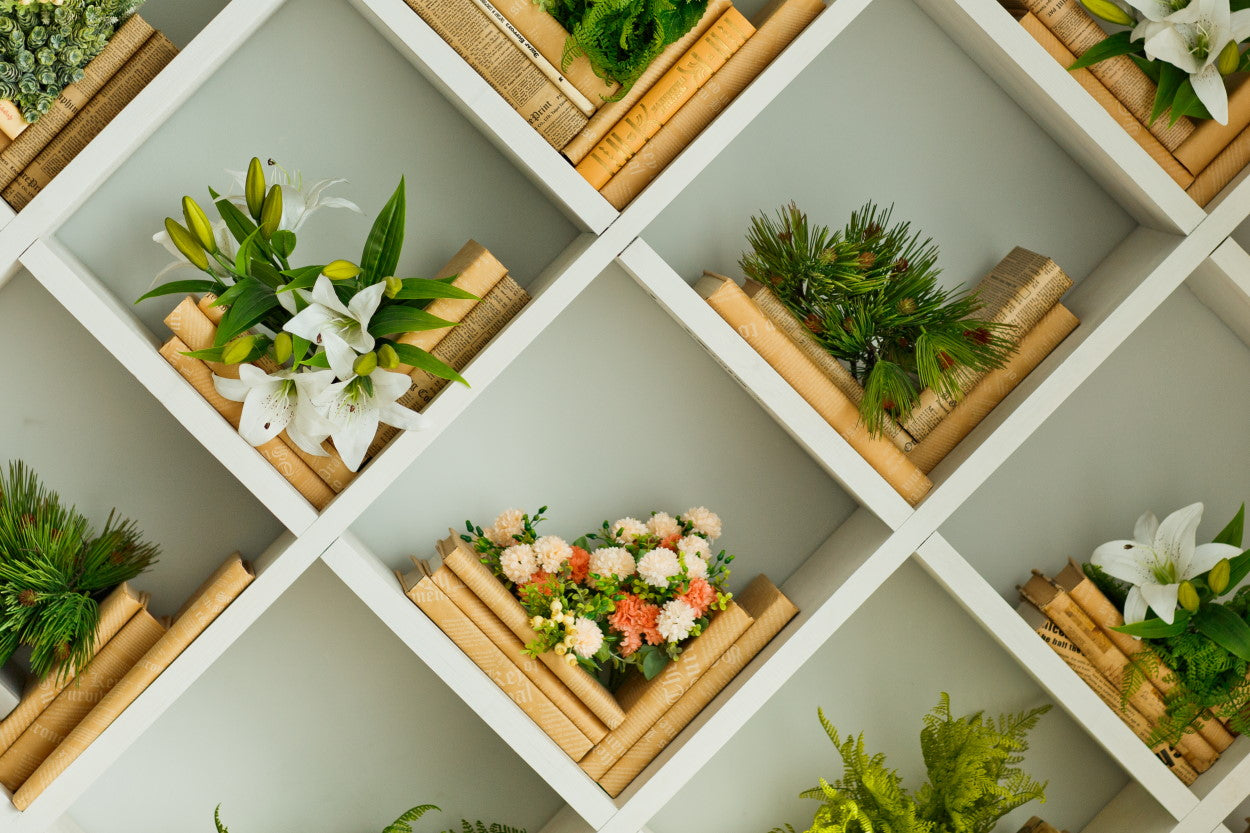Plants and other natural features don’t just look nice, they can actually improve the productivity, health, biodiversity, resilience, and sustainability of a space and its occupants. Actual living plants are not even necessary— images, textures, smells, and other sensory cues also inspire thoughts of the natural world.
Biophilia is literally the love of living things, and it refers to the psychological connection between humans and the natural world. Enjoying natural elements in our homes might seem obvious, but few industrial or modern design styles consider the natural world as a vital component of our daily lives. Biophilic design is incorporating a love of nature and living things into design choices from architecture to interior layout.
There are two key feelings that biophilic design encourages- a restorative environment and a landscape that is considered home territory. A restorative environment is a place that lets us think we have gotten away from the bustle of the real world and are in a place with a purpose compatible with our needs. What makes a home is harder to define, but researchers think that home is a place that fits our lives comfortably. Home is a place that meets our immediate concerns and fits our future plans, but also has mysterious moments that may be surprising but are always engaging and wholesome.
Let’s talk about how to get started with biophilic interior design by considering indoor plant placement and how plants help to create a space that is restorative and feels like home.

Where to place flowers in the home
When determining the best place for flowers, the first thing to consider is the color. Then, flowers can be used to add texture to a room or as an accent.
Flowering plants are one of the most aesthetically pleasing parts of nature. Which flowers to get and why can be a little daunting due to the thousands of different live and inanimate options available. Cut flowers look best, potted flowering plants are green year-round, dried flowers are easiest, and images of flowers last the longest, so a combination of these is best for most spaces. Companies like UrbanStems (a partner of Molekule) offer flowers, potted plants, and dried flowers, and images of flowers can be found almost anywhere art is sold.
The right color flower for the right room

The purple of dried lavender compliments this mellow space
Cool colors like blue and purple are best for relaxation or concentration and warm colors like red, orange, or red are best for work or activity. Green plants can go anywhere. Studies on different colored flowers indicate that blue and purple flowers are more calming and yellow, orange, or red flowers are more alarming. The green parts of any plant elicit positive and restful emotions, so any houseplant can provide some benefits.
Flowers have natural texture
Selecting rugs with flowering plant patterns or other natural textures will break up a uniform look to better define a room’s features. When the colors of a room are too drab or too closely matched with each other, it becomes harder to see any use at a glance. Natural textures can help to indicate or define specific features, so by just looking at a room an occupant can see how they might fit right in.

The flower print on the couch invites guests to sit
Flower print sitting areas are inviting but can be too busy, instead flowers on tables on either side of a couch still make for a very obvious invitation to sit. The shape of live plants is an excellent and natural way to add texture, such as large potted plants in corners to better define the boundaries of a room and make it cozier for activities that require privacy or safety. Uniform and neat matching furniture does not necessarily invite sitting, but a few throw pillows with natural textures will draw people over.
Accent flowers
In addition to their texture, flowers and smaller plants can help add depth to a space with an accent color. Accent colors are colors that are brighter, darker, or contrasting compared to the room’s primary color palette.

The flowers in the vase and flower pattern on the pillow provide color accents that draw the eye and give depth to the space
A table that is a similar color as the rest of the room may fade into the background, but by placing a flower it becomes better emphasized as a feature of the room. Images and pictures of flowers can provide a contrast against a bare wall to both bring out its chosen color and define the boundary of the room.
Biophilic design in practice
Making your home feel like a restorative and inviting place provides more than just feelings of restoration. There are well-researched positive impacts on health, so here are few take-home messages on ways science has found to get the benefits.
Small amounts of green
In one Taiwanese study, just six green plants were placed at the rear of a High School classroom. The students in that room were more comfortable and friendly and had less sick days or disciplinary infractions compared to their peers. A different study found that much more than 20% plant coverage in a space started to cancel out the productivity increase that was associated with a smaller amount of plants. The ideal coverage was found to be around 12% plants, or a little more than one-tenth of what you are looking at.

This desk has just the right amount of greenery
Take-home message: Any amount of plants can improve wellness, but too many can be distracting for work spaces. Around one-tenth indoor plant cover is ideal.
Best plants for biophilic design
While very few plants are capable of having a direct negative impact on the indoor environment, some are more universally appealing than others. When medically monitored for relaxation, one study found that most people prefer small green plants with mild scents. As a result the classic indoor plants like the pothos vine, spider plant, snake plants, and a few others are excellent choices for biophilic design. Succulents can be even better choices because they require very little water or attention.

From left to right: snake plant, pothos vine, spider plant, peace lily
What is also great about pothos vines, spider plants, snake plants, and succulents is that they are very easy to propagate. Do your research or ask an expert to find the best techniques, but they all involve some way of just cutting off a piece of the plant and helping it to grow with water. Getting one plant and propagating it is an easy and inexpensive way to get up to the ideal 12% green coverage.
Take-home message: Small, green, and low-scent plants are best for indoors. Learn how to propagate your houseplants if you need more.
No mold or pollen
Caring for your plants and flowers is essential because it can lead to mold if left unattended. Cut flowers can be put in water and given a little fertilizer but will eventually wilt. As the flowers wilt, mold can grow on the stems in the water. Mold spores are unhealthy to inhale and can trigger allergies or asthma, so anything moldy should be removed immediately. Along the same lines, overwatering potted plants can also lead to mold growth on the plant or in the dirt. Moldy vegetation or dirt should also be removed.

White mold like this can cause allergic reactions and should be removed
Dried flowers do not have pollen and do not wilt, but the pollen in fresh flowers can also trigger allergies in some people. If you do have allergic guests coming over you may have to remove any fresh flowers to reduce pollen in the air. Pollen can also be removed by opening windows or ventilating in any way. If ventilation is not enough, an air purifier that removes pollen and dust from the air can help.
Take-home message: To keep mold and pollen out of the air, remove any moldy plants, flowers, or dirt immediately. Allergies to pollen can be mitigated by removing flowers, ventilation, or air purification.
Keep your flowers fresh
To keep your flowers fresh, our friends at UrbanStems recommend changing the water everyday and trimming the stems every few days. It’s important to trim the stem at a 45-degree angle. Then, use some flower food, and avoid indirect light. Remove any wilted or molding stems to keep the rest happy. Check out their blog to learn how to keep flowers fresh even on vacation.

Change your flowers’ water every day
Take-home message: Change your cut flower’s water daily and give them flower food. Trim the stems and remove any wilted flowers.
Biophilic design is a growing field with applications far beyond the home and workplace, and has begun influencing city-sized policies. We hope this article helps you to satisfy your own love of living things in your home. Keep an eye on the Molekule blog, our Facebook, Instagram, and Twitter accounts for more science-backed ways to make things better.







